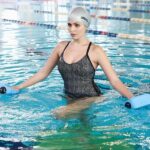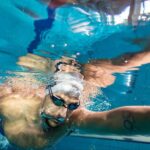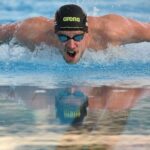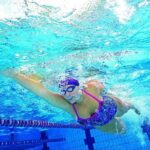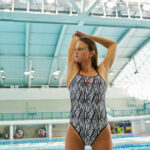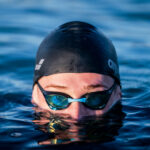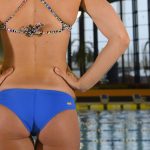Polymyalgia rheumatica: the benefits of the swimming pool
A complicated name for a troublesome disease.
What is polymyalgia rheumatica? It’s an intense inflammation of the muscles in the body. It’s a problem that can make your life quite difficult, reducing its quality dramatically.
What causes it and how can going to the swimming pool help in alleviating the situation?
THE CAUSES AND THE SYMPTOMS OF THE DISEASE
The disease usually presents itself for the first time in your 50s and 60s and sadly, for reasons still unknown. It resembles several similar symptoms of many other diseases such as the flu (when first beginning to show its symptoms) or of rheumatoid arthritis (in its advanced stages).
Women are more prone to getting it, affecting twice the amount of women as men. Also, the inhabitants of northern Europe and Scandinavia are especially predisposed to getting the disease (probably due to the low temperatures). Recent studies also show a link between genetic factors and environmental factors (virus infections and bacterial infections).
The disease starts off by the person getting neck pain, shoulder and back pain which slowly makes its way down throughout the whole body, if not treated in time. It will stop the person from accomplishing even the simplest daily tasks like getting out of bed on your own. One will lose weight and not sleep well due to heavy sweating and fever which are common symptoms during the night.
DON’T BE AFRAID OF GETTING IN THE WATER!
Together with the various medicines that will be prescribed to you, it is suggested to keep a healthy lifestyle, a balanced diet and above all keeping an active lifestyle.
Is swimming amongst the suggested sports? Absolutely!
Despite needing years to get better from this disease, this sport will help you obtaining bone-renewal, keeping fit, stretching your muscles and keeping your weight stable level.
HOW MUCH AND HOW
The difference between rhomboid arthritis, a disease which has several similar symptoms, polymyalgia rheumatic doesn’t cause pain in the joints but in the muscles themselves. Therefore, get in the pool without overdoing it, especially following an acute period of pain. Below I’ll show you a guideline for exercises that you can do during 3 week period.
SUGGESTED WORKOUT
- Frequency of workout: 2 times the first week; 2-3 times the second week; 3 times the third week.
- Duration: 25-35 minutes the first week; 25-35-35 mintues the second week; 30-45 minutes the third week.
- Stroke: The most suggested stroke for you to do is backstroke, followed by freestyle plus all the exercises that are connected to these two swimming techniques. The reason for this is that these styles allow your body to be stretched in the best way and also reduce the amount of muscle stress.
- Stretching: Always allow plenty of time for stretching after you’ve completed a workout, no matter if it’s in the water or on land. A stretching sequence should last about 15 minutes.
- Avoid cold water: Because the disease doesn’t include joint pain, my advice is to avoid “getting cold”, avoiding swimming pools that keep their water at a temperature below 82ºF, in order to reduce the risk of having unnecessary muscular contractions. Avoid standing still, even while doing your stretching, whether on land or in the water, if the outside temperature isn’t warm enough.
You have to be patient. Don’t let it get you down and continue fighting against this extremely troublesome, but curable disease.
Now, there’s nothing better to do than to have a warm shower, a bit of time to relax, waiting for the next article to come out!
—————
STORIES FROM OUR COMMUNITY: Gregory from Australia shares his experience of PMR
—————
Bibliography
- Anatomia umana; scienze motorie preventiva ed adattata; università degli studi di Pavia.
- La Polimagia Reumatica; C. Salvarani e L. Portioli; Pozzi Edizioni.
Written by:
Marco Borreca
Marco Borreca was born in Milan in 1985. After his competitive swimming career, he continued his sports studies graduating from the faculty of Preventive and Adaptive Motor Sciences in Pavia. He has been working as a swimming/ fitness instructor and rehabilitation expert at various sports centres since he was very young. He mainly focuses on using water for recovering motor skills in the case of sports injuries and disabilities. He currently works for a municipal sports centre as the Head of Fitness and also works for a private practice as a kinesiologist.
